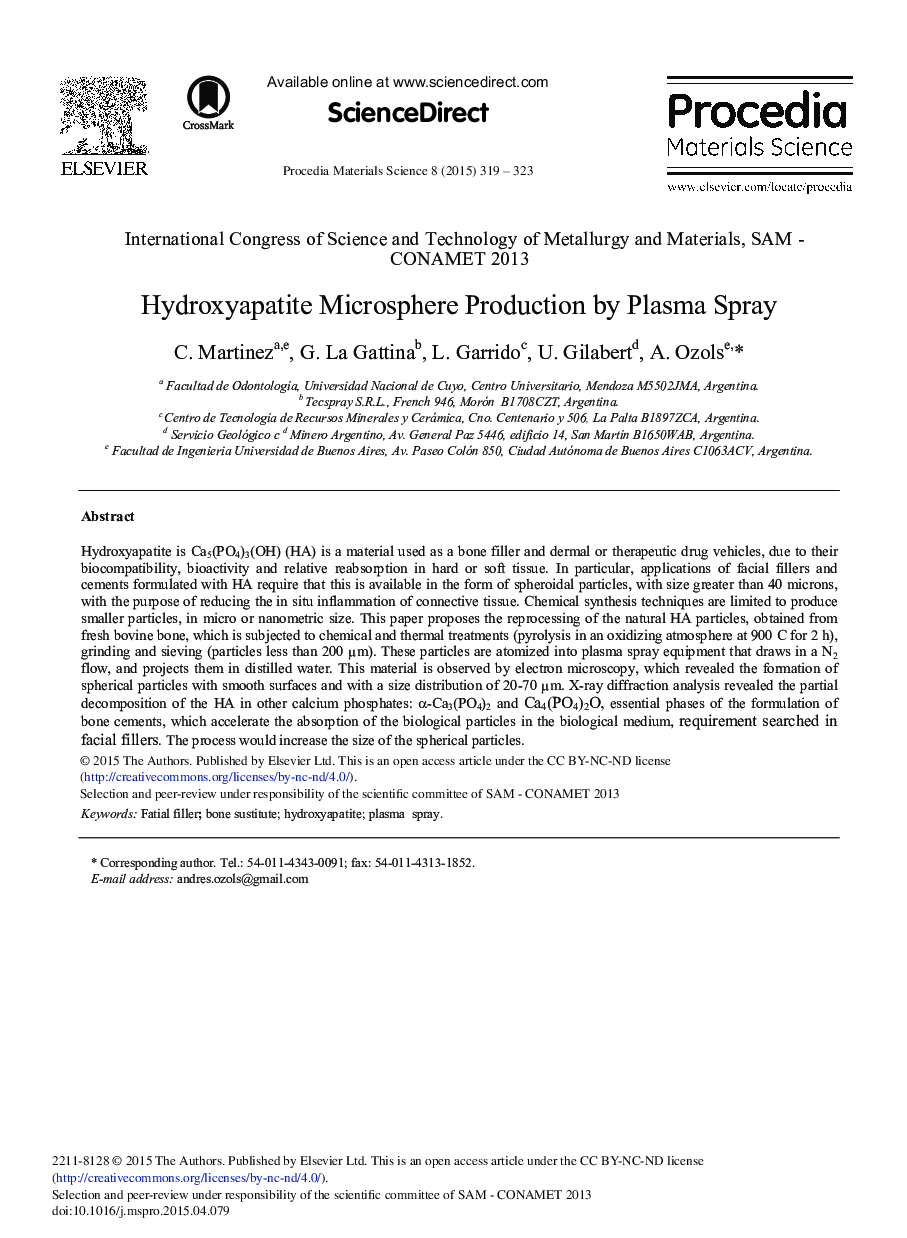| Article ID | Journal | Published Year | Pages | File Type |
|---|---|---|---|---|
| 1634151 | Procedia Materials Science | 2015 | 5 Pages |
Hydroxyapatite is Ca5(PO4)3(OH) (HA) is a material used as a bone filler and dermal or therapeutic drug vehicles, due to their biocompatibility, bioactivity and relative reabsorption in hard or soft tissue. In particular, applications of facial fillers and cements formulated with HA require that this is available in the form of spheroidal particles, with size greater than 40 microns, with the purpose of reducing the in situ inflammation of connective tissue. Chemical synthesis techniques are limited to produce smaller particles, in micro or nanometric size. This paper proposes the reprocessing of the natural HA particles, obtained from fresh bovine bone, which is subjected to chemical and thermal treatments (pyrolysis in an oxidizing atmosphere at 900 C for 2 h), grinding and sieving (particles less than 200 μm). These particles are atomized into plasma spray equipment that draws in a N2 flow, and projects them in distilled water. This material is observed by electron microscopy, which revealed the formation of spherical particles with smooth surfaces and with a size distribution of 20-70 μm. X-ray diffraction analysis revealed the partial decomposition of the HA in other calcium phosphates: α-Ca3(PO4)2 and Ca4(PO4)2O, essential phases of the formulation of bone cements, which accelerate the absorption of the biological particles in the biological medium, requirement searched in facial fillers. The process would increase the size of the spherical particles.
